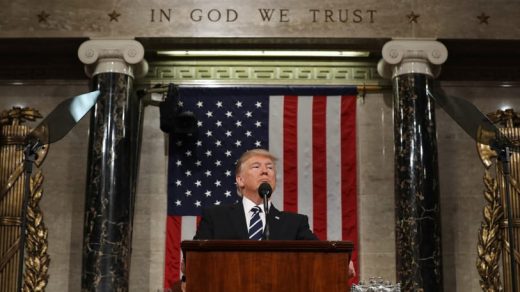Why Trump’s Childcare And Paid Leave Plans Are Fundamentally Flawed
In Trump’s speech to Congress last night he mentioned issues such as childcare and paid leave that advisors say his daughter Ivanka has advocated for.
But some advocacy groups and academics say there are plenty of flaws in these proposals.
For starters, the tax credits for the childcare plan that would be offered to working families favors those who are making more money, even though Trump has said from the time he was on the campaign trail that there would be an expanded benefit to low-income working families.
The Tax Policy Center, a nonpartisan industry group, just released analysis of Trump’s proposed plan and found “about 70% of benefits go to families with at least $100,000 and 25% of benefits go to families with at least $200,000. Very few benefits go to the lowest income families who are likely to struggle most with paying for child care,” the report’s authors write.
As one of the largest expenses families face, childcare costs continue to contribute to wage inequality. Recent research from the EPI found that while costs vary by state, it ranges between $344 to $1,472 a month to care for one preschool child, forcing more women to quit their jobs. A recent Department of Agriculture report estimates the cost of raising a child at $233,610 for married, middle-income parents. The cost of childcare is the third largest part of that expense and can be as much as 30% of a parent’s annual income.
Related: How The U.S. Almost Had Universal Child Care (Twice)
The Federal Reserve estimated that the average median family income in the U.S. in 2015 was just over $56,000. According to the Tax Policy Center, families making less than $40,000 will get a tax credit of $20 or less. “Those with incomes over $3.7 million would receive an average tax cut of nearly $1.1 million, over 14% of after-tax income,” the report’s authors write.
Vivien Labaton, cofounder and co-director of Make It Work Action calls this approach a bait and switch. “On one hand, he’s proposing childcare and paid leave plans that provide the bare minimum in terms of benefits, while on the other hand he’s proposing oppressive budget cuts that will eliminate or drastically cut resources to a range of services that are essential to working families,” she said in a statement.
The proposed budget cut of $54 billion is expected to shift spending away from certain agencies including the Environmental Protection Agency which stands to lose as much as a quarter of its budget.
Ellen Bravo, co-executive director of Family Values @ Work pointed out that the proposal for family leave Trump offers is for maternity leave only. That, she said in a statement, leaves out fathers and non-birth parents, as well as “all the other reasons people need leave for their own serious illness or that of a family member.” Bravo also noted that the amount of leave is only six weeks, which is half the amount of time afforded by the Family Medical Leave Act (although that time is unpaid) “It would come from an underfunded source, state unemployment insurance funds,” she said.
Taryn Morrissey, a scholar of childcare policies at American University and coauthor of Cradle to Kindergarten said, “Six weeks falls short of what research says babies and parents need to support their health and development.”
Debra Ness, president of the National Partnership for Women & Families, added that not only should paid family and medical leave be made available to all working people when they have a new child or a serious personal or family illness to address, it must also offer meaningful wage replacement. “It is appalling that the president failed to even mention fair pay,” Ness said in a statement, “at this time when the gender-based wage gap punishes women and families.”
Fast Company , Read Full Story
(41)














